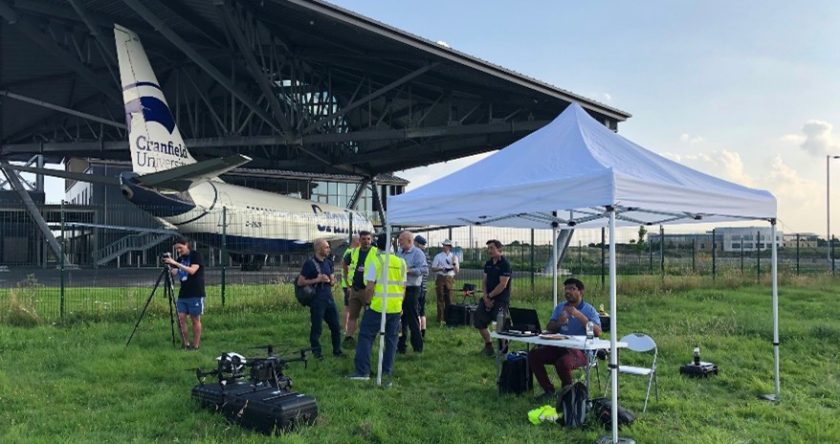Measurement trials with unmanned aerial vehicles (UAVs) at ARPAS-UK Member Cranfield University are paving the way for a better understanding of the noise impact of drones.
UAV noise is a concern often raised for flights over urban areas, encompassing not only noise volume but also frequency of sound from flights. A recent report by the UK Regulatory Horizons Council acknowledged that drones may be unpopular in residential settings due to their noise and this might be a growing issue as the use of drones for inspections and deliveries increases.
The Department for Transport (DfT) and Civil Aviation Authority (CAA) are constantly reviewing drone noise, but there is a lack of high-quality data to guide future regulation. Currently there is no noise standard for UAVs within the UK. The learning from these trials hopes to inform the methods required to meaningfully measure and understand UAV noise.
Research event examines noise monitoring and levels
A research event hosted at Cranfield Airport – in partnership with noise specialists Envirosuite and drone industry group ARPAS-UK, and observed by the CAA and Cranfield environmental noise experts – confirmed that microphones can effectively capture UAV noise levels at different altitudes and that noise spectra can be used to identify types of UAV.
The measurement trials involved commercially-available small to medium size multi-rotor UAVs flying a variety of defined and representative flight paths at Cranfield’s global research airport. Ground measurements were made using Envirosuite’s bespoke noise measurement equipment.
Maximum noise levels recorded from different UAVs flying at altitudes of 100 feet and above were typically in the range 50 to 60 decibels (dBA), similar to the sound levels that would normally be heard in an office or restaurant.
Professor Iain Gray, Director of Aerospace at Cranfield University and Chair of the Drone Industry Action Groupsaid: “This preliminary work is important in starting to inform our understanding of the impact of drone noise levels. What’s key now is that further detailed work takes place, building a more complete picture to inform future operational practices for the industry.”
Increasing understanding of noise impact
Dr Karthik Depuru Mohan, Research Fellow in Aeromechanical Systems, Cranfield University, said: “As our skies become busier with UAVs, it is important to understand the noise impact they may have on the populations below them and the relationship between fight paths and noise spectra. A comprehensive study with a wider range of UAV types, flight paths and manoeuvres can help to establish UAV noise standards.”
Along with absolute noise levels, the type of noises generated by drones is also a subject for research. Certain noises – such as the ‘buzzing’ sound of some drones – may be considered more annoying or disturbing than others. As drones land or take off their noise levels may also change, and this may have an impact on those living in the immediate area.
Dr Simon Jude, Senior Lecturer in Environmental Decision Making in the Centre for Environmental and Agricultural Informatics and leading Cranfield’s Urban Observatory project, said: “This research highlights the urgent need for further work to investigate public understanding, perceptions and acceptability of UAV noise. Knowledge and attitudes towards drones vary across society and public concerns and perceptions could be a barrier to adoption if not addressed.”
Further trials are now planned to gather more data so that a comprehensive analysis can be undertaken by Cranfield’s specialist teams and the potential societal impact of such noise better understood.
For more information visit:




